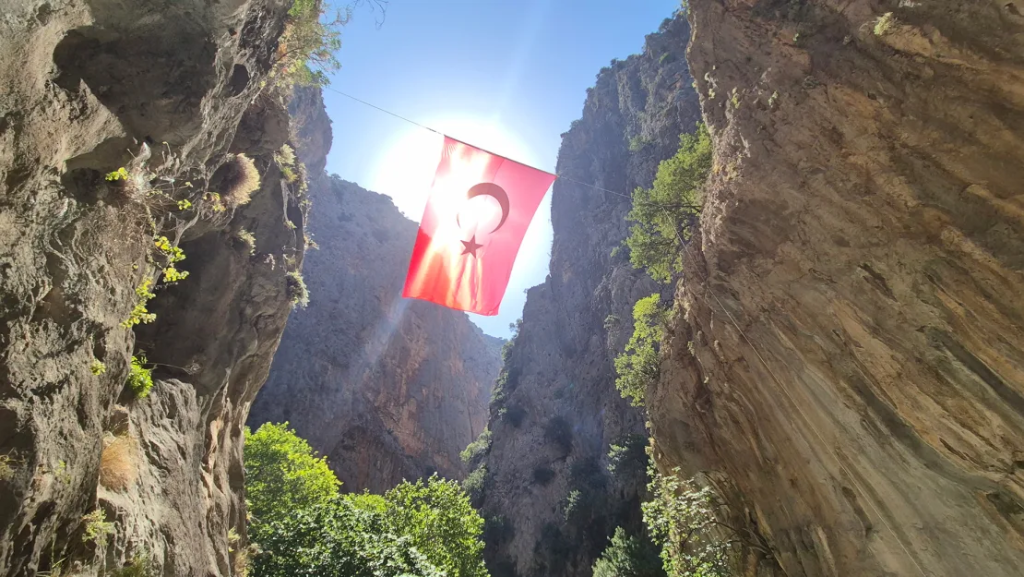Saklikent sits near southwest Turkey’s “Turquoise Coast,” a beautiful stretch of the Med where most travelers are decanted from airplanes and more or less flop on the shoreline for a week or two before heading home.
Some do venture inland where, after less than an hour of driving, they come across one of Turkey’s great natural wonders – a tall and narrow opening in a sheer cliff face out from which pours the blue waters of an icy river rushing down from the Taurus Mountains.
Around 18 kilometers (11 miles) long and with walls of up to 300 meters (984 feet), Saklikent is the largest canyon in Turkey. Located in its own national park, it’s also known as the “Hidden Valley” or “Lost City.”
When summer rolls around, it’s a magnet for tourists and day trippers who congregate at its busy lower reaches for a fun splash in its chilly cascades, a waterside kebab, a quick marvel at the steep canyon sides and then a ride down the river in a rubber tube.

Plenty of day tours offer Saklikent on their itineraries, with departures from the coastal cities of Ankara, Fethiye or Kaş, and smaller resorts in between. Most don’t hang around for long.
But those with time to kill and adventure in their veins can go deeper to find chasms where few tread. They’re not places for the anxious or ungainly, but they deliver adrenaline hits along with – when you’re back in the sunshine – the buzz of getting out unscathed.
Saklikent doesn’t claim to be danger free. Both before and after you enter there are large signs warning that pitfalls lie ahead. “The first 500 meters of the canyon’s walking route is suitable for children provided they’re accompanied by an adult,” they advise. “Going further carries risks of security.”
Even for grown ups, the warnings are dire. Those who make it more than a mile upriver without a guide and proper equipment “face a high risk for the safety of life and property.” While such signs keep many from exploring, others undoubtedly see them as a challenge.
At the canyon entrance, the atmosphere is festive. After buying their tickets – less than $2 – visitors pass through a narrow fissure of rock along a wooden pathway suspended over lively waters. Overhead, a gigantic Turkish flag ripples in the breeze.
This soon opens out into a broad natural basin where spouts of frigid water cascade from all sides. There are food and drink stands here, and picnic tables where people sit with their bare feet in the cold river and hands around a glass of hot Turkish tea.

There are delighted whoops and squeals from those horsing around in the benign torrents, enjoying a chilly dousing before sitting out in the sunshine to dry off. Crowds build up as the day marches on. It’s a fun, happy place – but only in good weather.
“In winter, when it rains, all this is kaput,” says Salih Demirel, one of the guides who help visitors explore Saklikent’s higher sections. He describes raging torrents smashing through the picnic area after heavy rains.
For that reason Saklikent is best avoided outside of late spring to early fall. Even in summer months, it is advisable to check the weather forecast as downpours can create problems – two people died here in July 2014 after a rare summer flash flood.
Visitors are also urged to wear hard hats, which are available to rent, though few do. Appropriate shoes are a must and are also offered for hire, but anything suitable for clambering over rocks and wading through water and mud will do.



